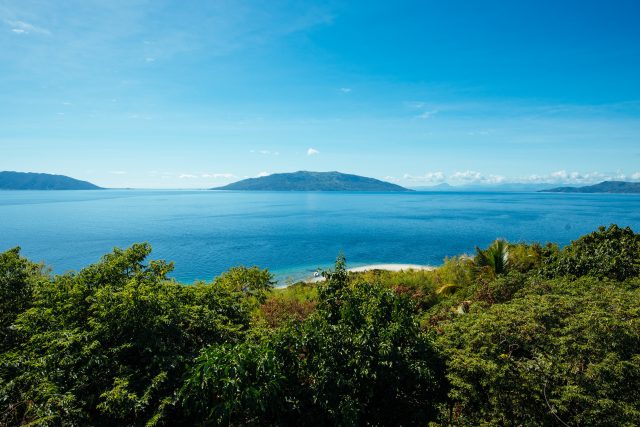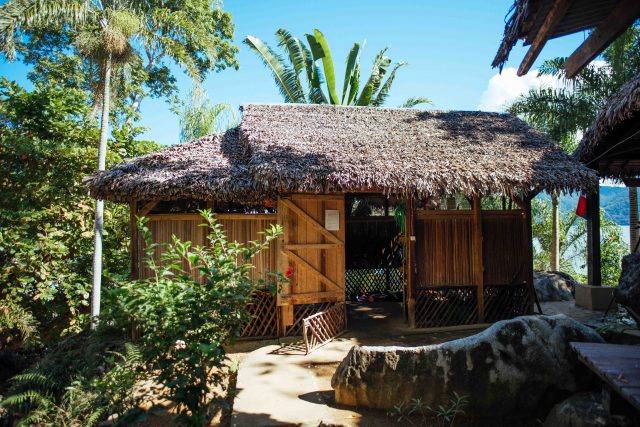Building a Reef from Scratch
How MRCI Constructs and Restores Artificial Reefs in Madagascar
How MRCI Constructs and Restores Artificial Reefs in Madagascar
MRCI would be nowhere without our dedicated team. We are ever so grateful for everyone from our maintenance and kitchen staff to our conservation and community team members. This week, we would like to introduce you to Solly!
Solly is our fantastic MRCI Marine Conservation and Island Outreach Officer. He has always loved the environment, having grown up in the rural areas of Madagascar next to the sea. As a young man, he saw a lot of people asking questions about the sea and noticed a lack of understanding in the local communities. This drove his desire to learn more about the marine environment and to educate people. As such, he went on to study a Masters Degree in Marine Biology at the University North Antsiranana (UNA).
Solly arrived at MRCI in 2019 to work as our Marine Conservation Intern. He progressed to work as our Island Outreach Officer where he taught communities and volunteers about environmental protection and Malagasy language and culture. Due to his amazing attitude and enthusiasm, he was quickly promoted to Marine Conservation and Island Outreach Officer, a role in which he built on his knowledge from his Masters Degree, learning more about coral reef ecosystems and fish. He really enjoyed this time, and also conducted a project on monitoring coral reefs in collaboration with the UNA.
Solly has become a truly invaluable member of our team. He is an excellent diver, having had the opportunity to complete his Emergency First Responder training, PADI Rescue Diver Course, and PADI Divemaster at MRCI. He is also trained in identifying fish, corals, algae, benthic invertebrates and seagrass. Due to his passion for educating local communities, he runs our staff environmental education programme. His favourite thing about working at MRCI is learning the identification of coral reef organisms and researching about corals.
Solly – we’re so glad to have you as part of the MRCI team!
Author: Ava Graham
Date: April 2021

I arrived at MRCI’s hidden camp found on the beautiful shores of Nosy Komba, also known as Lemur Island. I was feeling excited and eager to learn and explore yet nervous to call this remote camp home for the upcoming 7 weeks. I soon realised that there was nothing to be frightened about. Everybody I met, from other volunteers to staff and locals, were kind and welcoming as well as great fun.
What surprised me most about volunteering was the endless possibilities to learn. In my first week, I found myself being familiarised with 184 species of fish, being lectured on marine conservation whilst also being taught both Malagasy and French. What may have seemed like a quiet camp, was in fact a community of like-minded ocean enthusiasts who were always willing to do and learn more.
Since childhood, the ocean and everything that it holds has always interested me. Next year, I will study marine biology at university but I was eager to travel and gain new real-life experiences in the marine world first. I began volunteering on the coast of Kenya by helping to conserve the turtle populations through community education on the hazards of overfishing, protecting turtle nest sites and rehabilitating injured turtles.
This volunteering experience highlighted the importance of both education and habitat protection. I wanted to continue my conservation efforts by protecting our seas. The MRCI Marine Conservation Volunteering Programme gave me the opportunity to learn and teach in what seems like another world, Madagascar!

When volunteering in the marine conservation program, you can pick which group of marine life you want to learn and survey. The choice is between benthic (sea floor), sessile (coral reefs) and active swimmers (fish). I chose active swimmers! From the onset, it was my priority to learn and identify 184 species of fish found within MRCI’s dive site, Turtle Towers.
Every weekday, I was given the opportunity to dive and identify new active swimmers through point-out tests under the water. Back at camp, I had guided study lessons to help me memorise the (what seemed never-ending) species list. During the week, I also partook in regular beach cleans which, despite the long hot walk, always felt rewarding after coming back with 2 or 3 sacks full of litter. We would later recycle all of the pollution into our own ‘eco-bricks’.
Picking up old plastic bottles, toothbrushes, flipflops and broken sunglasses opens your eyes to scale of waste we produce in our modern world. So much of what we use in our daily lives will eventually end up in our seas. My direct experience of collecting our universal waste has inspired me to actively take part in helping to stop plastic pollution. Through education and new policies to ban and limit plastic waste as well as investing in new plastic alternatives, we can change our flawed waste disposal system and help keep our ocean clean and healthy!